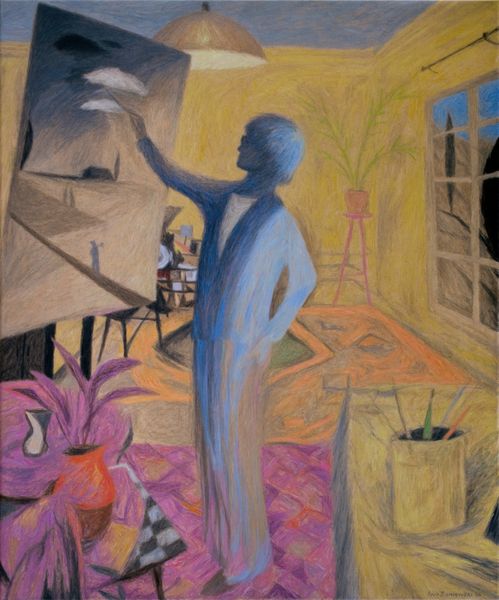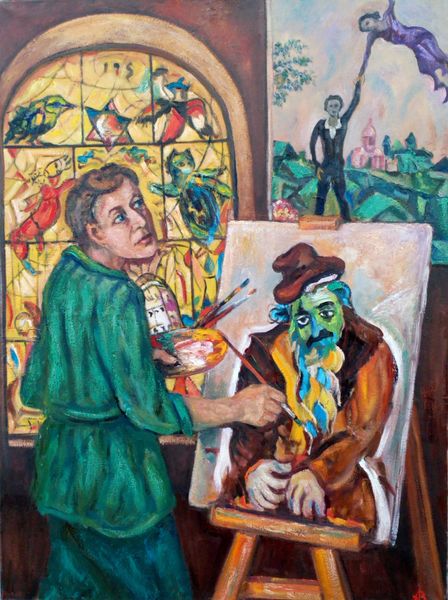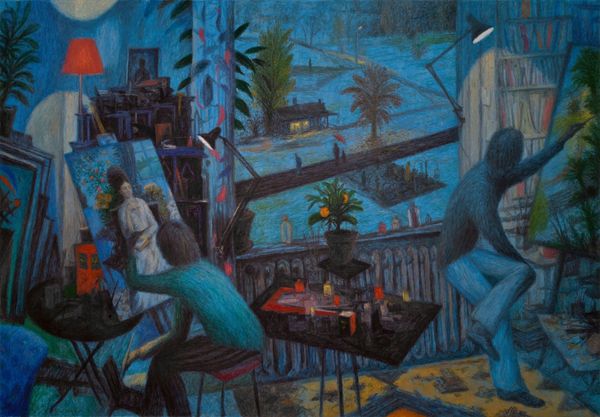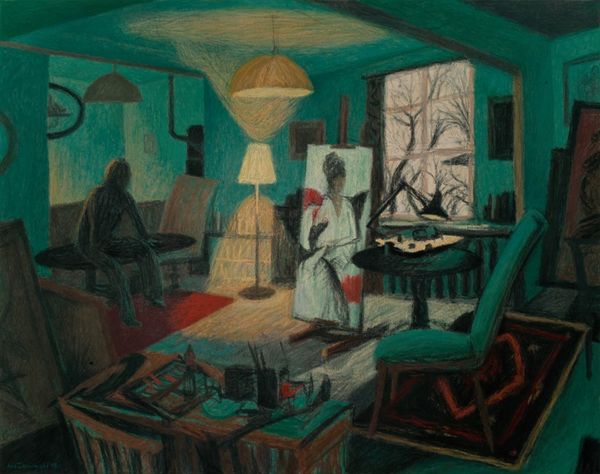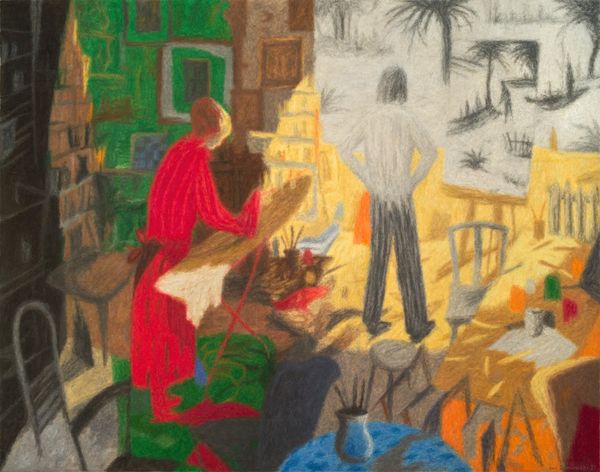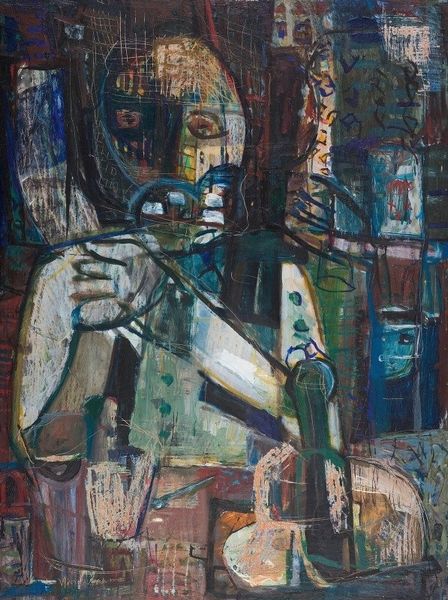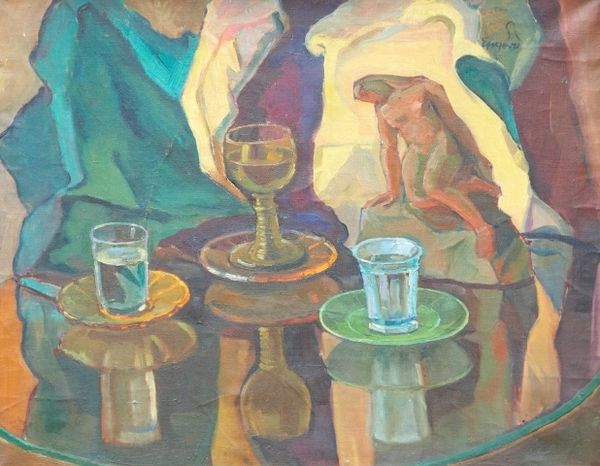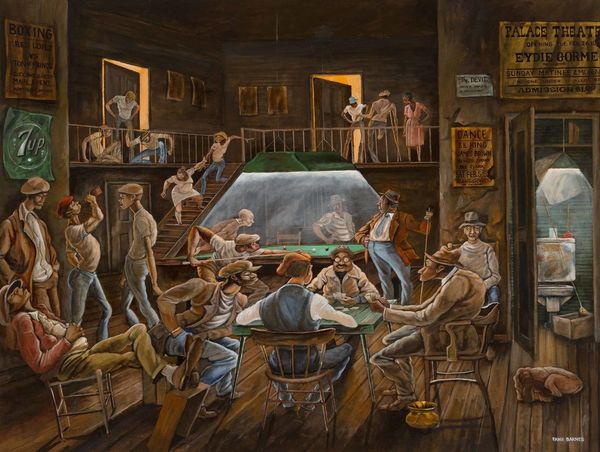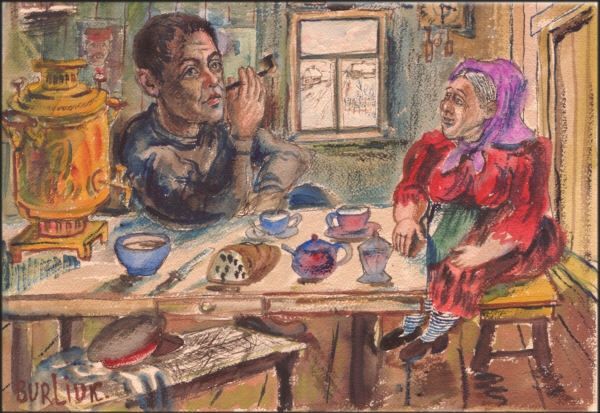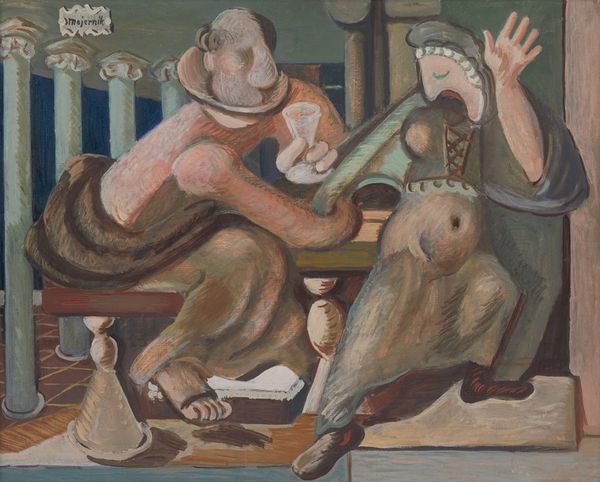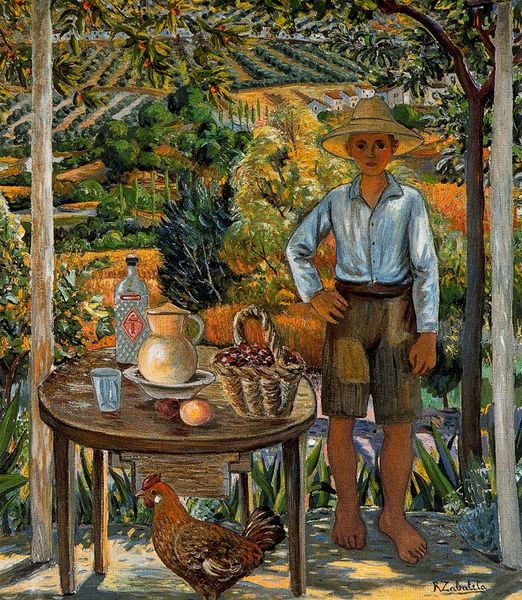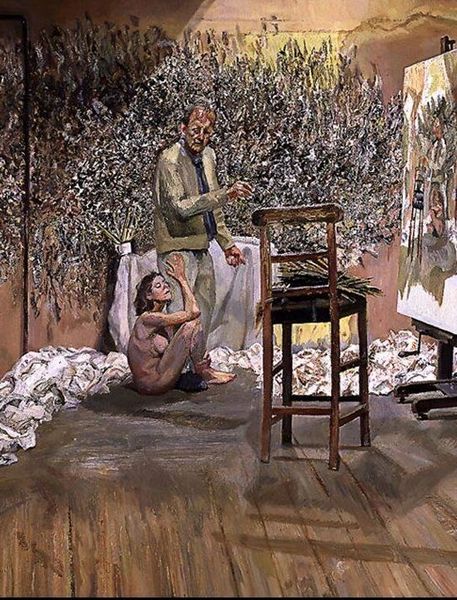
painting, oil-paint
#
portrait
#
painting
#
oil-paint
#
oil painting
#
female-nude
#
genre-painting
#
nude
#
realism
Dimensions: 92 x 72 cm
Copyright: Rafael Zabaleta,Fair Use
Curator: Rafael Zabaleta created this oil painting, titled "Painter and Reclining Model" in 1942. The composition feels quite direct, even confrontational in some ways. Editor: Yes, immediately my eyes are drawn to the raw, almost anxious energy of the brushstrokes. It conveys an atmosphere charged with both intimacy and distance. There's a voyeuristic quality but the model also exudes power through her gaze. Curator: It’s fascinating to examine this work through the lens of gender dynamics and power structures, especially considering the time it was created. How might we interpret the painter’s position relative to the reclining figure? Editor: Considering traditional iconography of the male gaze, this artist seems to subvert typical depictions of the nude. Instead of objectifying, the symbols are rendered in such a way as to acknowledge this inherent dynamic. He paints her image of himself, filtered. Curator: I'm interested in that idea of filtered experience. Do you think Zabaleta’s use of light plays into this theme of mediation and projection? How might his use of color further complicate these questions? Editor: Absolutely. The interior light, especially the bright sky visible behind the artist figure, frames and almost idealizes her, yet there’s a gritty honesty, an emotional realism present in her gaze. This challenges simplistic beauty tropes within the female nude, almost in a rebellious act. Curator: Indeed, this rebellious interpretation reflects Zabaleta’s interest in giving space for marginalized voices. Looking at the cultural moment he lived in, what were some pressing issues that shaped this dialogue between artist, model, and viewer? Editor: Spain in 1942 was still deeply entrenched in the aftermath of its Civil War. To openly paint nudes suggested some level of resistance, perhaps longing for more sensual freedom amidst oppression. The symbolism feels inherently subversive. Curator: Yes, by subtly including cultural context through the pose and atmosphere, Zabaleta invites reflection about the complexities of looking and the burdens placed on the viewed and the viewer. Editor: Precisely. Zabaleta makes me think about the persistent symbols found in the power structures of interpersonal relationships and beyond; It really adds so much to experience art as dialogue with the past. Curator: Indeed. The historical layering adds such an insightful point to unpack and brings awareness of modern considerations too. Editor: A great point! I'm glad to walk away today looking through Zabaleta's own cultural mirror and its reflection into now.
Comments
No comments
Be the first to comment and join the conversation on the ultimate creative platform.
